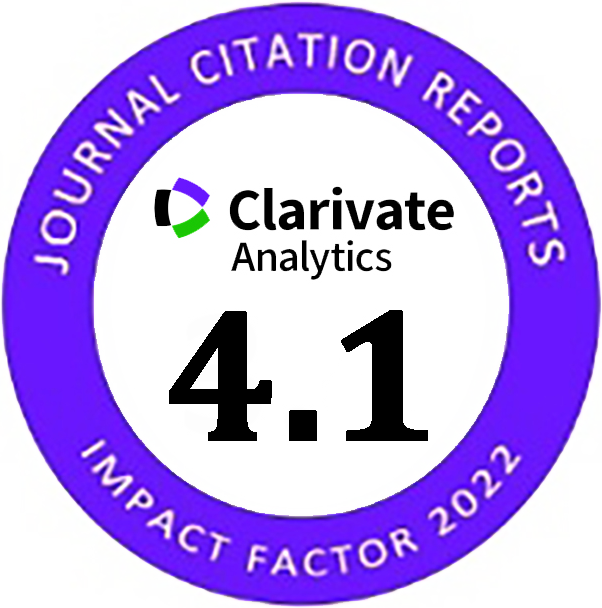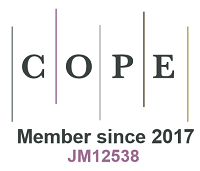Control Parameters for the Long-Term Tensile and Compressive Strength of Stabilized Sedimentary Silt
Abstract
Doi: 10.28991/CEJ-2023-09-04-03
Full Text: PDF
Keywords
References
Consoli, N. C., Da Silva Lopes, L., Foppa, D., & Heineck, K. S. (2009). Key parameters dictating strength of lime/cement-treated soils. Proceedings of the Institution of Civil Engineers: Geotechnical Engineering, 162(2), 111–118. doi:10.1680/geng.2009.162.2.111.
Saldanha, R. B., & Consoli, N. C. (2021). Compressibility, Durability and Strength of Coal Fly Ash–Carbide Lime–Sodium Chloride Blends. International Journal of Geosynthetics and Ground Engineering, 7(2). doi:10.1007/s40891-021-00286-7.
Mohammadinia, A., Arulrajah, A., D’Amico, A., & Horpibulsuk, S. (2018). Alkali-activation of fly ash and cement kiln dust mixtures for stabilization of demolition aggregates. Construction and Building Materials, 186, 71–78. doi:10.1016/j.conbuildmat.2018.07.103.
Arulrajah, A., Mohammadinia, A., D’Amico, A., & Horpibulsuk, S. (2017). Effect of lime kiln dust as an alternative binder in the stabilization of construction and demolition materials. Construction and Building Materials, 152, 999–1007. doi:10.1016/j.conbuildmat.2017.07.070.
Arulrajah, A., Mohammadinia, A., Phummiphan, I., Horpibulsuk, S., & Samingthong, W. (2016). Stabilization of Recycled Demolition Aggregates by Geopolymers comprising Calcium Carbide Residue, Fly Ash and Slag precursors. Construction and Building Materials, 114, 864–873. doi:10.1016/j.conbuildmat.2016.03.150.
Arulrajah, A., Ali, M. M. Y., Disfani, M. M., & Horpibulsuk, S. (2014). Recycled-Glass Blends in Pavement Base/Subbase Applications: Laboratory and Field Evaluation. Journal of Materials in Civil Engineering, 26(7), 4014025. doi:10.1061/(asce)mt.1943-5533.0000966.
Arulrajah, A., Kua, T. A., Suksiripattanapong, C., & Horpibulsuk, S. (2019). Stiffness and strength properties of spent coffee grounds-recycled glass geopolymers. Road Materials and Pavement Design, 20(3), 623–638. doi:10.1080/14680629.2017.1408483.
Arulrajah, A., Kua, T. A., Suksiripattanapong, C., Horpibulsuk, S., & Shen, J. S. (2017). Compressive strength and microstructural properties of spent coffee grounds-bagasse ash based geopolymers with slag supplements. Journal of Cleaner Production, 162, 1491–1501. doi:10.1016/j.jclepro.2017.06.171.
Hoch, B. Z., Diambra, A., Ibraim, E., Festugato, L., & Consoli, N. C. (2022). Strength and stiffness of compacted chalk putty–cement blends. Acta Geotechnica, 17(7), 2955–2969. doi:10.1007/s11440-021-01415-2.
Rios, S., Viana da Fonseca, A., & Baudet, B. A. (2014). On the shearing behaviour of an artificially cemented soil. Acta Geotechnica, 9(2), 215–226. doi:10.1007/s11440-013-0242-7.
Pereira dos Santos, C., Bruschi, G. J., Mattos, J. R. G., & Consoli, N. C. (2022). Stabilization of gold mining tailings with alkali-activated carbide lime and sugarcane bagasse ash. Transportation Geotechnics, 32. doi:10.1016/j.trgeo.2021.100704.
Baldovino, J. A., Izzo, R., & Ekinci, A. (2022). Strength Relationship Equation for Artificially Stabilized Rammed Sedimentary Soils. Buildings, 12(9). doi:10.3390/buildings12091433.
de Jesús Arrieta Baldovino, J., dos Santos Izzo, R. L., & Ekinci, A. (2023). Strength, durability, and microstructure of lime production residue glass powder binder-based geomaterial. Acta Geotechnica, 18(3), 1593–1606. doi:10.1007/s11440-022-01678-3.
Tiwari, N., Satyam, N., & Puppala, A. J. (2021). Effect of Synthetic Geotextile on Stabilization of Expansive Subgrades: Experimental Study. Journal of Materials in Civil Engineering, 33(10). doi:10.1061/(asce)mt.1943-5533.0003901.
NBR 5739. (2007). Concrete-compression test of cylindrical specimens-method of test. Brazilian National Standards Organization (ABNT), São Paulo, Brazil. (In Portuguese).
Quiñónez Samaniego, R. A., Scheuermann Filho, H. C., de Araújo, M. T., Bruschi, G. J., Festugato, L., & Consoli, N. C. (2023). Key parameters controlling strength and resilient modulus of a stabilised dispersive soil. Road Materials and Pavement Design, 24(1), 279–294. doi:10.1080/14680629.2021.2013937.
Ferreira, F. A., Desir, J. M., Lima, G. E. S. de, Pedroti, L. G., Franco de Carvalho, J. M., Lotero, A., & Consoli, N. C. (2023). Evaluation of mechanical and microstructural properties of eggshell lime/rice husk ash alkali-activated cement. Construction and Building Materials, 364, 129931. doi:10.1016/j.conbuildmat.2022.129931.
Oluremi, J. R., Eberemu, A. O., Ijimdiya, S. T., & Osinubi, K. J. (2019). Lateritic soil treated with waste wood ash as liner in landfill construction. Environmental and Engineering Geoscience, 25(2), 127–139. doi:10.2113/EEG-2023.
Metcalf, D., Warner, N. L., Nossal, G. J. V., Miller, J. F. A. P., Shortman, K., & Rabellino, E. (1975). Growth of B lymphocyte colonies in vitro from mouse lymphoid organs. Nature, 255(5510), 630–632. doi:10.1038/255630a0.
Ordoñez Muñoz, Y., Luis dos Santos Izzo, R., Leindorf de Almeida, J., Arrieta Baldovino, J., & Lundgren Rose, J. (2021). The role of rice husk ash, cement and polypropylene fibers on the mechanical behavior of a soil from Guabirotuba formation. Transportation Geotechnics, 31, 100673. doi:10.1016/j.trgeo.2021.100673.
ASTM D 2487-17. (2020). Standard Practice for Classification of Soils for Engineering Purposes (Unified Soil Classification System), ASTM International, Pennsylvania, United States. doi:10.1520/D2487-17.
ASTM D4318-17e1. (2018). Standard Test Methods for Liquid Limit, Plastic Limit, and Plasticity Index of Soils. ASTM International, Pennsylvania, United States. doi:10.1520/D4318-17E01.
ASTM D854-14. (2016). Standard Test Methods for Specific Gravity of Soil Solids by Water Pycnometer. ASTM International, Pennsylvania, United States. doi:10.1520/D0854-14.
Rogers, C. D. F., Ceng, M., Glendinning, S., & Roff, T. E. J. (1997). Lime modification of clay soils for construction expediency. Proceedings of the Institution of Civil Engineers: Geotechnical Engineering, 125(4), 242–249. doi:10.1680/igeng.1997.29660.
NBR 7181. (2016). Granulometric Analysis. Brazilian National Standards Organization (ABNT), São Paulo, Brazil. (In Portuguese).
DER-SP M 196/89. (1989). Classification of tropical soils according to the MCT methodology. DNER, Department of Roads and Highways, São Paulo, Brazil.
NBR 16605-14. (2017). Portland cement and other powdered materials - Determination of specific mass. Brazilian National Standards Organization (ABNT), São Paulo, Brazil. (In Portuguese).
NBR 7182. (2016). Soil - Compaction Test, Brazilian Association of Technical Standards. Brazilian National Standards Organization (ABNT), São Paulo, Brazil. (In Portuguese).
ASTM D698-12. (2014). Standard test method for laboratory compaction characteristics of soil using standard effort (12 400 ft-ibf/ft3 (600 kN-mlm3)). ASTM International, Pennsylvania, United States. doi:10.1520/D0698-12.
Baldovino, J. A., Moreira, E. B., Teixeira, W., Izzo, R. L. S., & Rose, J. L. (2018). Effects of lime addition on geotechnical properties of sedimentary soil in Curitiba, Brazil. Journal of Rock Mechanics and Geotechnical Engineering, 10(1), 188–194. doi:10.1016/j.jrmge.2017.10.001.
Mills, L., Ivey, S., & Golias, M. M. (2010). Effectiveness of Freeway Truck Operation Safety Measures: Review of Current Research. Transportation Research Board 89th Annual Meeting, Transportation Research Board, Washington, United States.
Saldanha, R. B., da Rocha, C. G., Caicedo, A. M. L., & Consoli, N. C. (2021). Technical and environmental performance of eggshell lime for soil stabilization. Construction and Building Materials, 298. doi:10.1016/j.conbuildmat.2021.123648.
Tonini de Araújo, M., Tonatto Ferrazzo, S., Jordi Bruschi, G. J., & Consoli, N. C. (2021). Mechanical and Environmental Performance of Eggshell Lime for Expansive Soils Improvement. Transportation Geotechnics, 31. doi:10.1016/j.trgeo.2021.100681.
NBR 7222. (2011). Concrete and mortar — Determination of tensile strength by diametric compression of cylindrical specimens. Brazilian National Standards Organization (ABNT), São Paulo, Brazil. (In Portuguese).
Consoli, N. C., Foppa, D., Festugato, L., & Heineck, K. S. (2007). Key Parameters for Strength Control of Artificially Cemented Soils. Journal of Geotechnical and Geoenvironmental Engineering, 133(2), 197–205. doi:10.1061/(asce)1090-0241(2007)133:2(197).
Consoli, N. C., Corte, M. B., & Festugato, L. (2012). Key parameter for tensile and compressive strength of fibre-reinforced soil-lime mixtures. Geosynthetics International, 19(5), 409–414. doi:10.1680/gein.12.00026.
Consoli, N. C., Dalla Rosa Johann, A., Gauer, E. A., Dos Santos, V. R., Moretto, R. L., & Corte, M. B. (2012). Key parameters for tensile and compressive strength of silt-lime mixtures. Geotechnique Letters, 2(3), 81–85. doi:10.1680/geolett.12.00014.
Consoli, N. C., Quiñónez, R. A., González, L. E., & López, R. A. (2017). Influence of Molding Moisture Content and Porosity/Cement Index on Stiffness, Strength, and Failure Envelopes of Artificially Cemented Fine-Grained Soils. Journal of Materials in Civil Engineering, 29(5). doi:10.1061/(asce)mt.1943-5533.0001819.
Tex-120-E. (2013). Test procedure for soil-cement testing. Texas Department of Transportation, (TxDOT), Austin, United States.
Baldovino, J. de J. A., Moreira, E. B., Carazzai, É., Rocha, E. V. de G., dos Santos Izzo, R., Mazer, W., & Rose, J. L. (2021). Equations controlling the strength of sedimentary silty soil–cement blends: influence of voids/cement ratio and types of cement. International Journal of Geotechnical Engineering, 15(3), 359–372. doi:10.1080/19386362.2019.1612134.
Rios, S., Viana Da Fonseca, A., Consoli, N. C., Floss, M., & Cristelo, N. (2013). Influence of grain size and mineralogy on the porosity/cement ratio. Geotechnique Letters, 3(3), 130–136. doi:10.1680/geolett.13.00003.
Baldovino, J. de J. A., Izzo, R. L. dos S., Silva, É. R. da, & Rose, J. L. (2021). Closure to “Sustainable Use of Recycled-Glass Powder in Soil Stabilization” by Jair de Jesús Arrieta Baldovino, Ronaldo Luis dos Santos Izzo, Érico Rafael da Silva, and Juliana Lundgren Rose. Journal of Materials in Civil Engineering, 33(4). doi:10.1061/(asce)mt.1943-5533.0003685.
Baldovino, J. de J. A., Izzo, R. L. dos S., Pereira, M. D., Rocha, E. V. de G., Rose, J. L., & Bordignon, V. R. (2021). Closure to “Equations Controlling Tensile and Compressive Strength Ratio of Sedimentary Soil–Cement Mixtures under Optimal Compaction Conditions” by Jair de Jesús Arrieta Baldovino, Ronaldo Luis dos Santos Izzo, Mirian Dayane Pereira, Eduardo Vieira de Goes Rocha, Juliana Lundgren Rose, and Vitor Reinaldo Bordignon. Journal of Materials in Civil Engineering, 33(4), 7021002. doi:10.1061/(asce)mt.1943-5533.0003671.
Scheuermann Filho, H. C., Beck Saldanha, R., Gravina da Rocha, C., & Cesar Consoli, N. (2021). Sustainable Binders Stabilizing Dispersive Clay. Journal of Materials in Civil Engineering, 33(3). doi:10.1061/(asce)mt.1943-5533.0003595.
Consoli, N. C., Cruz, R. C., Floss, M. F., & Festugato, L. (2010). Parameters Controlling Tensile and Compressive Strength of Artificially Cemented Sand. Journal of Geotechnical and Geoenvironmental Engineering, 136(5), 759–763. doi:10.1061/(asce)gt.1943-5606.0000278.
Schnaid, F., Prietto, P. D. M., & Consoli, N. C. (2001). Characterization of Cemented Sand in Triaxial Compression. Journal of Geotechnical and Geoenvironmental Engineering, 127(10), 857–868. doi:10.1061/(asce)1090-0241(2001)127:10(857).
Coop, M. R., & Atkinson, J. H. (1994). The mechanics of cemented carbonate sands. Geotechnique, 44(3), 533–537. doi:10.1680/geot.1994.44.3.533.
Baldovino, J. A., Moreira, E. B., Izzo, R. L. dos S., & Rose, J. L. (2018). Empirical Relationships with Unconfined Compressive Strength and Split Tensile Strength for the Long Term of a Lime-Treated Silty Soil. Journal of Materials in Civil Engineering, 30(8), 6018008. doi:10.1061/(asce)mt.1943-5533.0002378.
Consoli, N. C., Festugato, L., Da Rocha, C. G., & Cruz, R. C. (2013). Key parameters for strength control of rammed sand-cement mixtures: Influence of types of portland cement. Construction and Building Materials, 49, 591–597. doi:10.1016/j.conbuildmat.2013.08.062.
DOI: 10.28991/CEJ-2023-09-04-03
Refbacks
- There are currently no refbacks.
Copyright (c) 2023 Wagner Teixeira, Jair Arrieta-Baldovino, Ronaldo Izzo

This work is licensed under a Creative Commons Attribution 4.0 International License.






